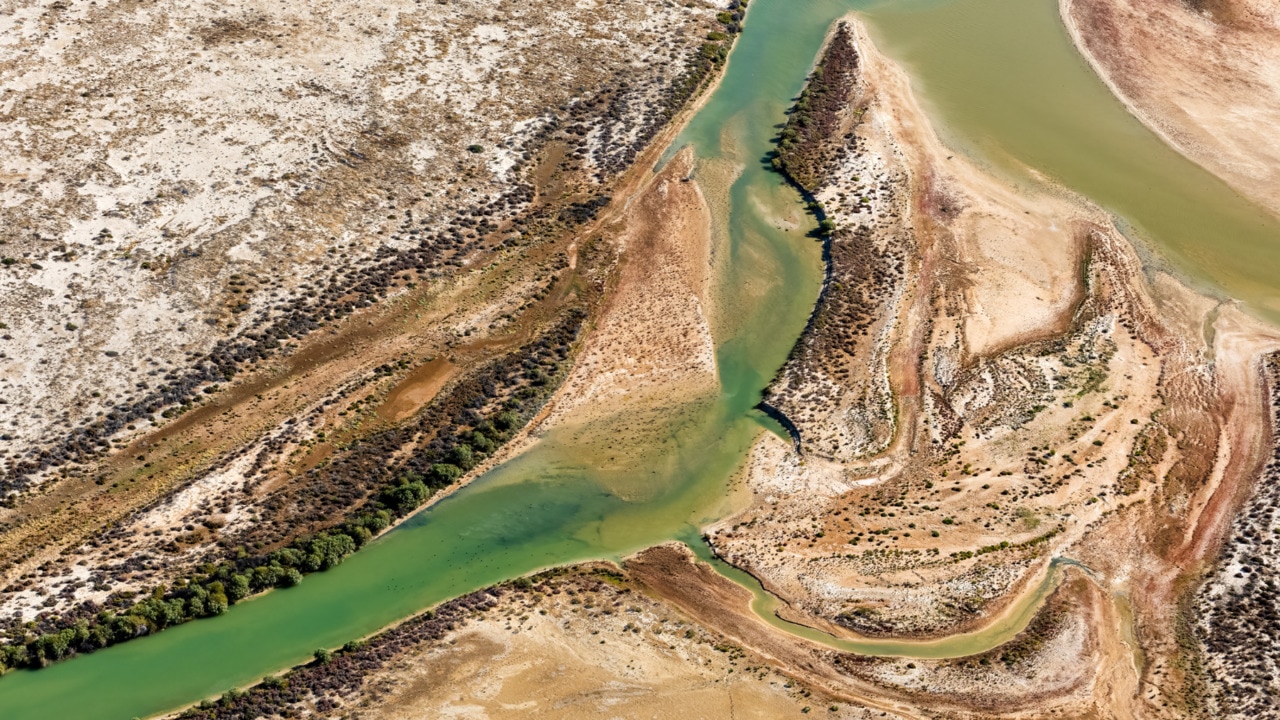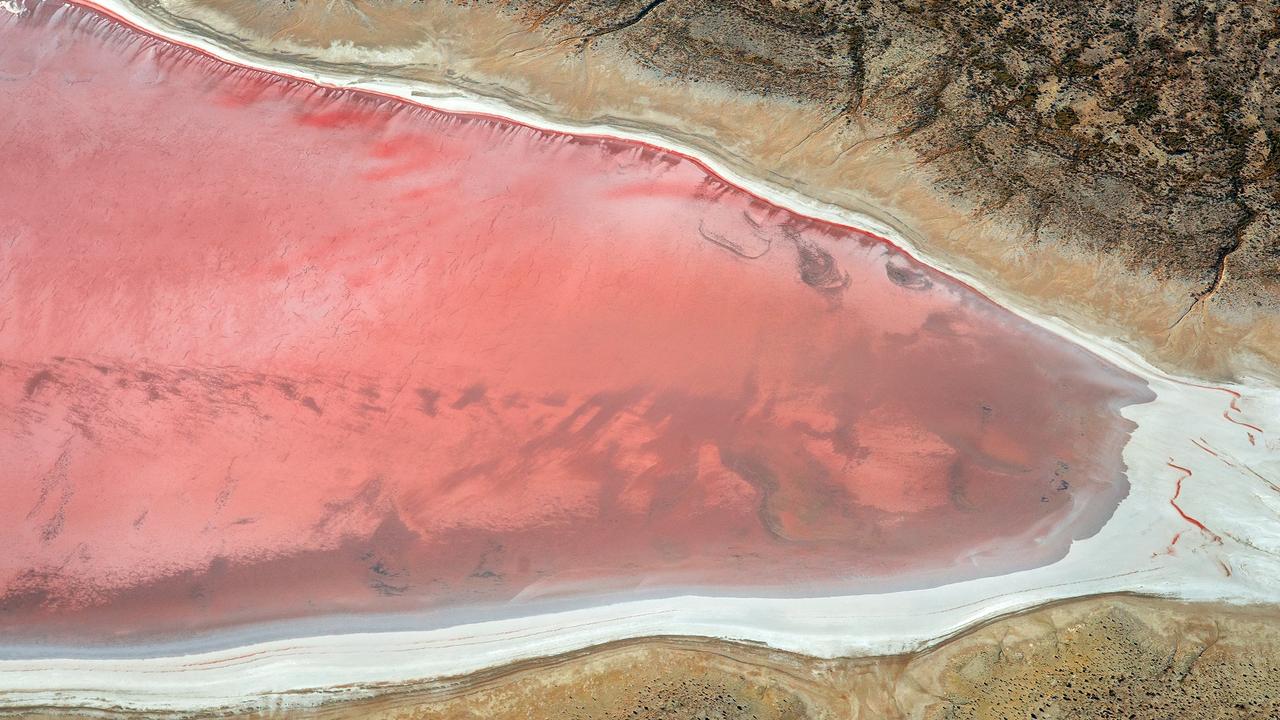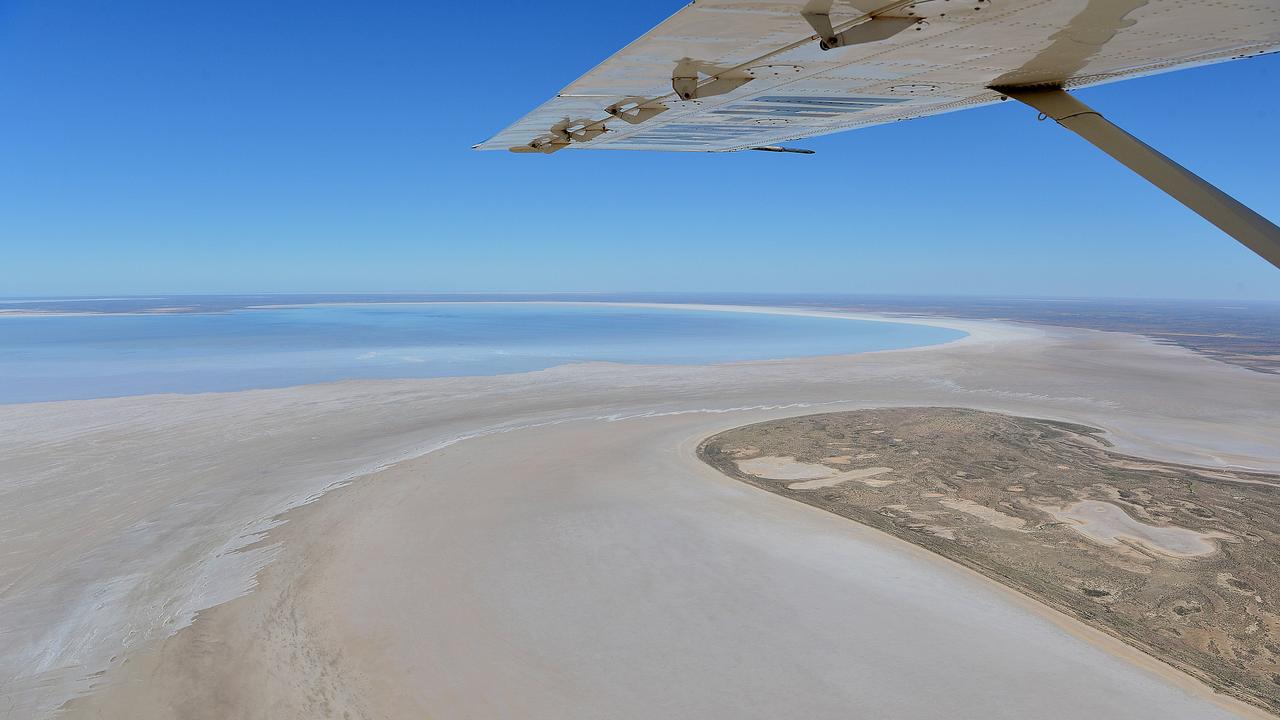Lake Eyre management plan restricts tourists to viewing the natural beauty from the air or viewing platforms
Tourists visiting the magnificent Lake Eyre will face strict new curbs, after a new management plan was enacted to protect Australia’s largest salt lake.

SA News
Don't miss out on the headlines from SA News. Followed categories will be added to My News.
Tourists will no longer be able to walk on Lake Eyre, after a new management plan was enacted to better protect Australia’s largest salt lake.
The plan, backed by the traditional owners the Arabana people, restricts recreational access to the lake that spans 9500sq km in the state’s far north.
The predominantly dry lake bed experiences large flood events every decade, and fills an average of only four times every 100 years.
TELL US WHY IN THE COMMENTS
Visitor numbers vary greatly from 5000 in a dry year to about 25,000 in a flood year, with future tourists only able to witness the phenomenon by air or designated viewing areas.


The Environment Department said accessing the lake can cause significant damage to the fragile salt crust and surface, leading to scarring lasting many years.
The lake’s surface and arid vegetation can also be incrementally damaged through the movement of visitors, their vehicles and equipment.
“This is very much about public safety,’’ National Parks and Wildlife Service SA programs manager Mr Irving said.
“Venturing out on the lake can be extremely dangerous because it is vast and has significantly variable weather conditions, which makes it easy to become disoriented and get lost.
“The lake is incredibly remote and people who may get injured or lost on the lake bed cannot rely on others to rescue them.
“Vehicles driven out on to the lake can also break down or get bogged and leave people stranded. These circumstances have led to deaths on SA salt lakes.”
Recreational activities, including swimming, driving and boating, were already restricted under the National Parks and Wildlife Act 1972.
More Coverage
Originally published as Lake Eyre management plan restricts tourists to viewing the natural beauty from the air or viewing platforms









